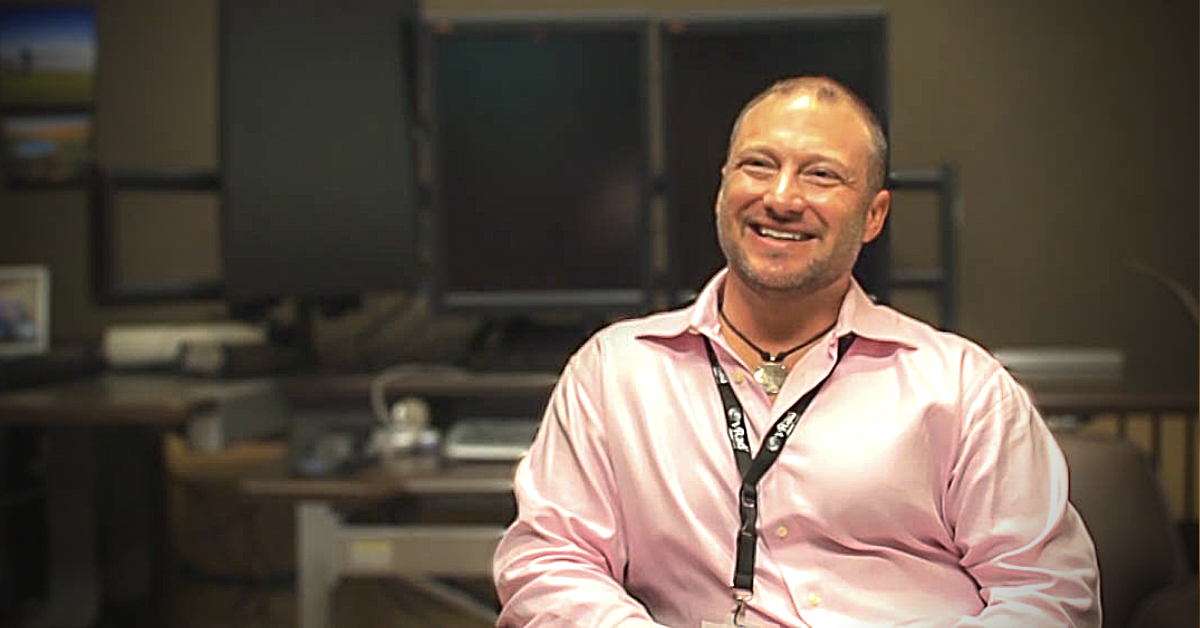I Wanted More Family Time. How vRad Helped Me Find It
One in a series from people sharing their experiences as vRad teleradiologists. In this entry, Jonathon Lee, MD, explains what he discovered after...

Remote radiologist jobs with flexible schedules, equitable pay, and the most advanced reading platform. Discover teleradiology at vRad.

Radiologist well-being matters. Explore how vRad takes action to prevent burnout with expert-led, confidential support through our partnership with VITAL WorkLife. Helping radiologists thrive.

Visit the vRad Blog for radiologist experiences at vRad, career resources, and more.

vRad provides radiology residents and fellows free radiology education resources for ABR boards, noon lectures, and CME.

Teleradiology services leader since 2001. See how vRad AI is helping deliver faster, higher-quality care for 50,000+ critical patients each year.

Subspecialist care for the women in your community. 48-hour screenings. 1-hour diagnostics. Comprehensive compliance and inspection support.

vRad’s stroke protocol auto-assigns stroke cases to the top of all available radiologists’ worklists, with requirements to be read next.

vRad’s unique teleradiology workflow for trauma studies delivers consistently fast turnaround times—even during periods of high volume.

vRad’s Operations Center is the central hub that ensures imaging studies and communications are handled efficiently and swiftly.

vRad is delivering faster radiology turnaround times for 40,000+ critical patients annually, using four unique strategies, including AI.
.jpg?width=1024&height=576&name=vRad-High-Quality-Patient-Care-1024x576%20(1).jpg)
vRad is developing and using AI to improve radiology quality assurance and reduce medical malpractice risk.

Now you can power your practice with the same fully integrated technology and support ecosystem we use. The vRad Platform.

Since developing and launching our first model in 2015, vRad has been at the forefront of AI in radiology.

Since 2010, vRad Radiology Education has provided high-quality radiology CME. Open to all radiologists, these 15-minute online modules are a convenient way to stay up to date on practical radiology topics.

Join vRad’s annual spring CME conference featuring top speakers and practical radiology topics.

vRad provides radiology residents and fellows free radiology education resources for ABR boards, noon lectures, and CME.

Academically oriented radiologists love practicing at vRad too. Check out the research published by vRad radiologists and team members.

Learn how vRad revolutionized radiology and has been at the forefront of innovation since 2001.

%20(2).jpg?width=1008&height=755&name=Copy%20of%20Mega%20Nav%20Images%202025%20(1008%20x%20755%20px)%20(2).jpg)

Visit the vRad blog for radiologist experiences at vRad, career resources, and more.


Explore our practice’s reading platform, breast imaging program, AI, and more. Plus, hear from vRad radiologists about what it’s like to practice at vRad.

Ready to be part of something meaningful? Explore team member careers at vRad.
3 min read
 Jonathon Lee, MD
:
December 18, 2018
Jonathon Lee, MD
:
December 18, 2018

One in a series from people sharing their experiences as vRad teleradiologists. In this entry, Jonathon Lee describes his typical workday as a vRad diagnostic radiologist.
I chose to step away from a full partnership position, so I could focus more on family. After a little over a year with vRad, I can’t see me ever going back to the conventional model. I’ve found a better work/life balance, and I’ve discovered unexpected professional rewards as well.
This post answers the question I most often hear from colleagues:
“So, what is a typical day like as a teleradiologist?”
Like most rads, I had always pictured myself in a traditional practice or hospital environment. Teleradiology was at best a back-up plan – in case the practice got bought out and cut staff, or the hospital went under. I thought switching to vRad would require some adjustment. In fact, the transition was effortless.
It's the first time that I've had a job where I seem to happily show up 15 minutes early for work every day and then it's just seamless thereafter. I literally walk to the basement in my pajamas, turn on my computer and start reading scans. The vRad system handles all the administrative stuff in the background.
For me, there was virtually no learning curve in adjusting to vRad. I click on the next available study to access all images and supporting documents. I provide my interpretation, which is recorded and reported to the referring clinician. Then I repeat for subsequent cases at my own pace.
I enjoy being able to complete one case, then start fresh with a new one. I control the pace. There’s no downtime during or between studies – vRad takes care of all the administrative stuff so I can simply focus on the case at hand.
I spend almost no time on the inefficiencies I routinely dealt with in a typical practice. It’s wonderful. I don't get called with protocol questions. I don't have to go to barium procedures and things like that. I never find myself on hold waiting to connect with a clinician. I have virtually no undesirable down time, whatsoever.
In a year, I've never made a phone call. I talk to physicians several times a night about emergent findings, but I don't call them. I click a button when I need to talk to Dr. Smith about patient Jones, and my phone rings when she’s available to talk. In the meantime, I can move on to the next study. Patient Jones’ case is still there in the background until the vRad operations team connects with Dr. Smith. Then my phone rings and all the case info pops up on my screen. I've got my report. I've got the images. Even if I've read 5 more cases and I don't remember why I called for the ER physician in the first place, it's all right there in front of me, and I didn't have to waste a second to make it happen.
Speaking of efficiencies, vRad has an unmatched macro library built in to a trouble-free dictation system. It takes the headaches out of reporting.
It makes a big difference in how you feel about your day. It's so much less exhausting to not be trying to multitask at all times. The vRad system takes care of that for me. I don’t even have to think about it.
I was worried I wouldn’t get as much physician interaction as a teleradiologist, but that’s not the case.
I cover a lot of different hospitals in multiple states, but my schedule is fixed – I know exactly what hours I'm going to work every shift. As a result, I’ve been pleasantly surprised how much I’m talking to a small group of doctors on a regular basis. They tend to work the same hours that I do. I'm actually on a first name basis with a lot of ER doctors around the country. The nature of vRad ensures I encounter a variety of new clinicians as well.
Of course, all of these interactions occur remotely via vRad communications tools and technology, but I think all of radiology is headed in that direction. Most of us don’t need to be at the radiology department to look at images anymore – just the IR docs doing procedures.
Many hospitals can't possibly support 3 or 4 radiologist positions on site at all times, let alone one of every subspecialty. They really appreciate access to a higher level of expertise.
It’s cool to know that, every day, I give physicians and their patients access to a level of expertise that they otherwise wouldn’t have. It makes that hospital more valuable to the community, and it prevents the need for them to divert some patients to a distant trauma center, potentially delaying needed treatment.
While I like my home office in Dublin, Ohio, I don’t always work from my basement reading room there. I have a little condo in Key West, Florida, where I’ve set up another reading room. As long as I have a computer, I can fill my shift with vRad from virtually any location.
Hear from More vRad Radiologists
  |
Back to Blog

One in a series from people sharing their experiences as vRad teleradiologists. In this entry, Jonathon Lee, MD, explains what he discovered after...
.png)
I’ll be honest, I had no plans to go into teleradiology straight from residency. However, I fell into it because economic conditions meant choices...
.png)
Because I work as a teleradiologist, I (thankfully) no longer have to commute to get to work. Living in southern California, traffic is one of the...
vRad (Virtual Radiologic) is a national radiology practice combining clinical excellence with cutting-edge technology development. Each year, we bring exceptional radiology care to millions of patients and empower healthcare providers with technology-driven solutions.
Non-Clinical Inquiries (Total Free):
800.737.0610
Outside U.S.:
011.1.952.595.1111
3600 Minnesota Drive, Suite 800
Edina, MN 55435